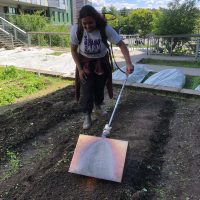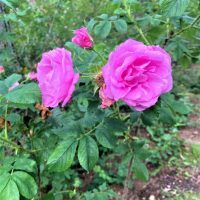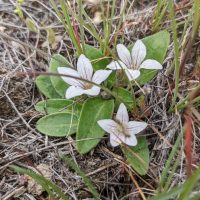Late Summer Selections at the Washington Park Arboretum

1) Castanea crenata Japanese Chestnut
Though it is one of the smaller species of chestnut, C. crenata is still a valued food tree in its native Japan. Ordinarily, the nuts are also smaller than those of the European varieties.
This specimen is located on the east side of our old field nursery along the gravel path.
2) Cephalotaxus harringtonia var. nana Dwarf Plum Yew
Native to the forest understories of East Asia, this small evergreen shrub is known to thrive in semi-shaded places rather than in full sunshine.
Read moreRhododendron Glen Renovation Begins this Month

The next phase of the Rhododendron Glen restoration in the Arboretum is set to begin the week of August 16, 2022.
Read moreHydrangea Heaven at the Washington Park Arboretum

Hydrangea is a genus of over 75 species and 600 named cultivars that are native to a wide range of regions and countries including Japan, Asia, Indonesia, Himalayan Mountains, and the Americas. The name “Hydrangea” stems from the Greek words, hydor meaning “water” and aggeion meaning “vessel”, in reference to the cup-like capsular fruit.
1) Hydrangea macrophylla ‘Madame Emile Mouillere’ Madame Emile Mouillere Hydrangea
This award-winning Hydrangea was bred in France over 100 years ago.
Read moreAugust 2022 Plant Profile: Nolina nelsonii

After 29 years, our incredible, show-stopping Nolina nelsonii specimen is flowering at the Center for Urban Horticulture!
Read moreUnforgettable Beauties at the Washington Park Arboretum

1) Fuchsia magellanica Tree Fuchsia
Native to the southern coast of South America.
It has a notable orange, flaky bark and this particular shrub in the Arboretum has light pink blooms with a purple shade underneath.
Found near the intersection of Lake Washington Boulevard and Arboretum Drive, across from the Stone Cottage.
2) Lobelia tupa Devil’s Tobacco
Native to central Chile, the Mapuche of southern Chile consider it a sacred plant.
Read moreSummer Sensations at the Washington Park Arboretum

Spring may delight us with color, but throughout the year we can appreciate other sensory elements in Washington Park Arboretum’s collections. Leaves and blooms can give off powerful aromas. Texture and plant shape can provide a sense of drama or reverie. Enjoy all your senses with these plant choices!
1) Magnolia sieboldii Oyama Magnolia
Egg-shaped in bud, the white nodding flowers have a crimson stamen and leaves behind a showy pink fruit.
Read moreUW Farm Weekly Dirt: Around the Farm

Looking Back on my AmeriCorps Service Term
Many of you have seen me running around the farm, managing volunteers, or maybe delivering produce to the UW Food Pantry. This was all due to my serving as an AmeriCorps member with the UW Farm. I began this full-time position in September 2021 and recently my term of service ended in June 2022.
UW Farm Weekly Dirt: Roasted Kohlrabi Recipe

Purple kohlrabi is native to northern Europe and has been cultivated since ancient times. Kohlrabi is known as the “cabbage turnip” and is a popular vegetable in Hungary, Germany, France, Italy, and Russia.
Read moreEarly Summer Blooms at the Washington Park Arboretum

It may not feel like it after such a rainy, cool spring, but the Solstice on June 21st marks the start of summer! Although spring flowers are now behind us, plenty more have been blooming to welcome in the summer months. Celebrate the beginning of summer at the Arboretum by viewing these seasonal favorites.
1) Rosa rugosa ‘Wasagaming’ Wasagaming Rose
This rose is a hybrid with showy, cool pink blossoms appearing in early summer and a strong floral fragrance.
Read moreExploring Marcellus Shrub Steppe Natural Area Preserve

At the beginning of May, Rare Care staff and volunteers along with Department of Natural Resources (DNR) staff completed the first of two botanical surveys of the Marcellus Shrub Steppe Natural Area Preserve. The goals of this visit were to know what plants are there and re-find any previously documented rare plants. We also wanted to fill in knowledge gaps for shrub steppe species distribution and abundance that may contribute to designating a species for conservation status.
Read more